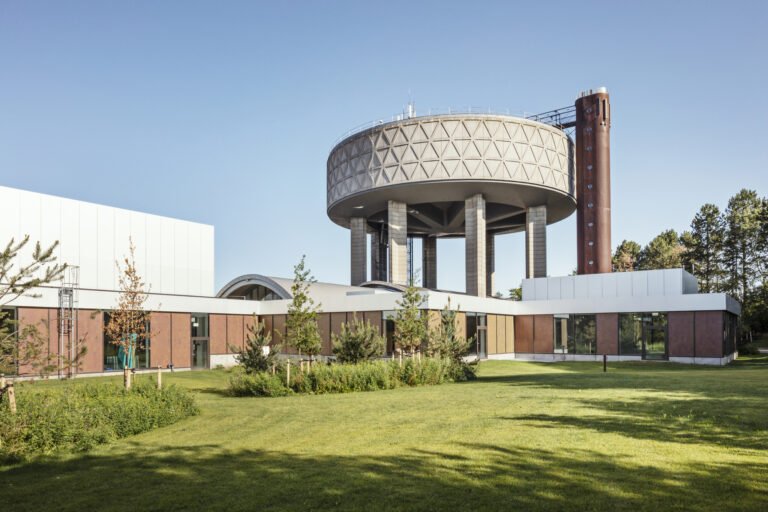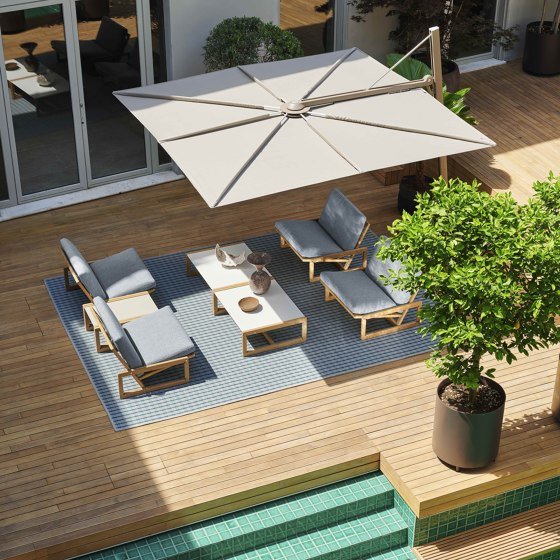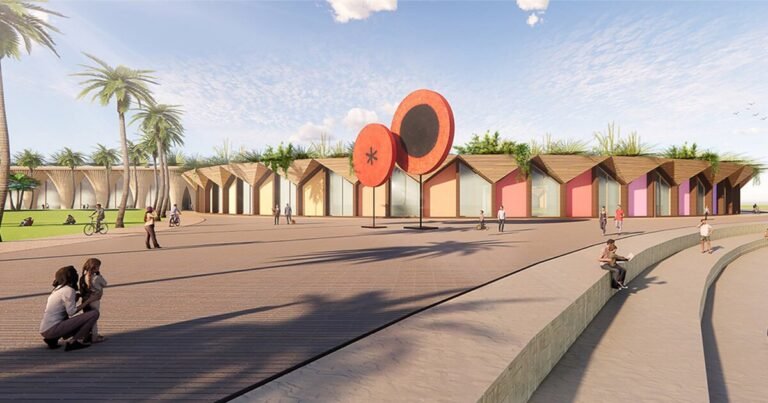Roxbury House / Desai Chia Architecture
Roxbury House / Desai Chia Architecture


Text description provided by the architects. The Roxbury House marries art and landscape in intimate and broad moments. The house is positioned uphill and on the edge of the 12-acre property to strategically take advantage of prevailing winds for natural ventilation and to minimize site disturbance, allowing the existing open meadow and forest to support local wildlife and native vegetation. The undulating roofs and their deep overhangs simultaneously draw in sunlight at different times of the day and frame landscape views while also reducing direct glare and solar heat gain. Rainwater management— through a series of rain gardens and retention ponds— mitigate erosion along the steep terrain.

The clients, art gallery owners who specialize in contemporary art by Latinx artists, wanted flexibility to use their home as an extension of their NYC gallery and leave portions of the site open for site-specific outdoor installations. The architects were inspired by Alexander Calder’s estate—not far from the client’s site. Calder’s home and studio sit at the top of a rolling meadow; the meadow became Calder’s outdoor workshop, an organic canvas to display his numerous large scale sculptures.

At the Roxbury House, indoor spaces and outdoor courtyards oscillate at different scales with long axial views through the house, linking rooms with beautiful layers of materials and light while culminating in distant views to the landscape.


Native birch trees embedded in the courtyards connect the surrounding forest to the art experience. Hallways act as gallery walls; flanked by floor to ceiling windows, they frame the courtyards.

The exterior of the house is clad in “shou sugi ban,” a traditional Japanese method of charring wood to make the façade rot resistant, bug resistant and maintenance-free. Inside, the shou sugi ban wood walls & ceilings have a lighter level of charring to provide the vaulted spaces with a soothing color & texture.

The respect for local craftsmanship is expressed in the interior detailing of millwork elements. A built-in entry bench, the kitchen and bathroom cabinets, the media room desk and bedroom shelving are both functional and sculptural. Concealed linear accent lighting rakes light across anodized aluminum that sheathes the back of the cubbies. For the media room desk, the architects worked with an artisan millworker who wire-brushed the grain of the wood: softwood material was brushed away, revealing the harder grain as a raised undulating surface that celebrates the textural beauty of the wood.

The living room fireplace is clad in large porcelain panels and has a faceted form to capture light and shadow. Glazed wall tiles in the bathrooms and gallery hallways bounce sunlight across the space in evocative ways throughout the day. The hallway tiles were handmade in Mexico and create a tactile backdrop for artwork.

A photovoltaic array was installed on the roof of the garage, providing enough power to recharge the owners’ electric vehicle and run the house in case of a power outage.









